Circular runways: Engineer defends his proposal
- Published
Think again: Will circular runways ever take off?
Last month we published a video arguing the case for circular runways at airports, as part of a series called World Hacks. It took off and went viral.
The video has had more than 36 million views on Facebook, external and generated heated debate on social media - including within the aviation community. Many people are sceptical about the concept.
So we decided to hand-pick some of the top concerns and put them straight to the man proposing the idea: Dutch engineer Henk Hesselink.
This is what he had to say.

Wing tip-off
One Twitter user was concerned by what he saw: wings nearly hitting the tarmac.


Henk Hesseklink: With the banked character of the runway, the wingtips and engines are closer to the ground than currently is the case.
But the bank angle is designed such that even the most constrained aircraft (Boeing 747 and Airbus A380) will be able to land.
Still, there is less margin for error than is currently the case. Pilots will need automated support for take-off and landing.
Henk provided this diagram:
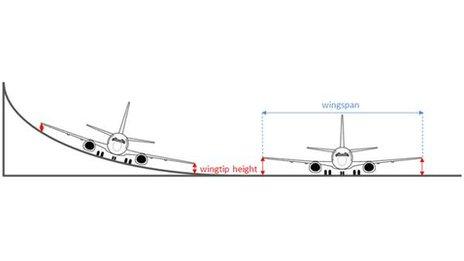

Rejected take-offs
Twitter user Philip Collier was concerned about takeoffs that didn't go to plan.


Henk responds: As there is no end to the runway, a starting aircraft can keep rolling and come to a stop in a safer way than is currently the case.
We will need a safety distance between individual aircraft, which we took into consideration in our trials.
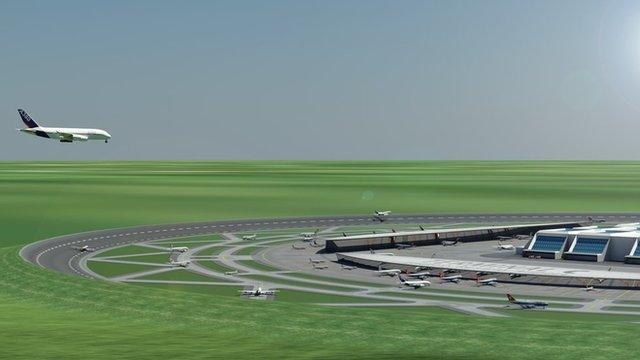
Could an aborted takeoff cause problems in a circular runway?
We used a runway length of three kilometres for planning purposes and a safety distance between separate aircraft of one kilometre.

A new approach?
The ILS (Instrument Landing System) helps pilots to land using precision guidance, sent from fixed points on the ground. Daniel on Twitter wondered if it could cope with a circular approach.
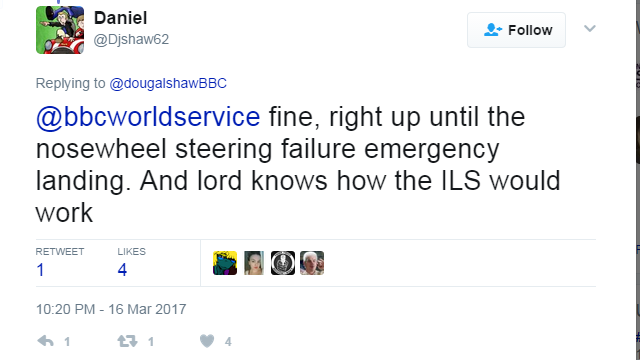

Henk Hesselink: Obviously, as we are making a turn during the landing, the ILS (Instrument Landing System) will not function. But we may be able to use an ILS-system for part of the approach phase, the first part is still straight-in.
Either we put a simple form of ILS on each direction of the runway, or we can install a movable ILS-system that will move around the runway, for example on a rail-track . It is a bit far-fetched, I know.
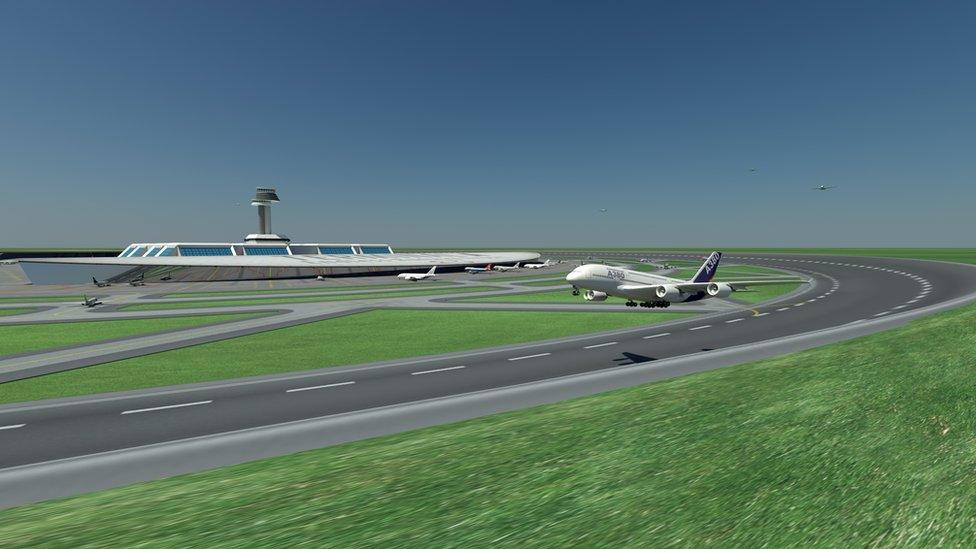
Could Instrument Landing Systems be adapted for circular runways?
Better would be to use some new approach, like satellite navigation. The current quality of GPS is not sufficient, but new methods are already being investigated.
I think developments in this area will move very fast as there is more demand for accurate location information, from trains, cars, drones, etc. Already curved approaches and fixed curves are used in aviation, requiring new navigation systems.

Ice, rain and 'go arounds'
Aviation enthusiast Phil Derner raised two big concerns in Business Insider magazine, external. Ice and rain will reduce the centrifugal force which circular runways rely on, increasing the stopping distance, he argued. He added: "What if three airliners are landing, something goes wrong and they abort landings. Their prescribed go-around procedure would likely take them dangerously close to the other aircraft."

Henk responds: Indeed, like on a "normal" runway, ice and rain will have an effect on the operation. It is a fact that nowadays runway surfaces are getting better and are becoming more resistant to difficult conditions, and the current concrete absorbs most of the water.
We have been thinking about building offices and parking spaces under the runway and the remaining heat could be transferred to the runway, but this is an idea that will need further exploration. Heating of the runway surface is something that is already being applied.
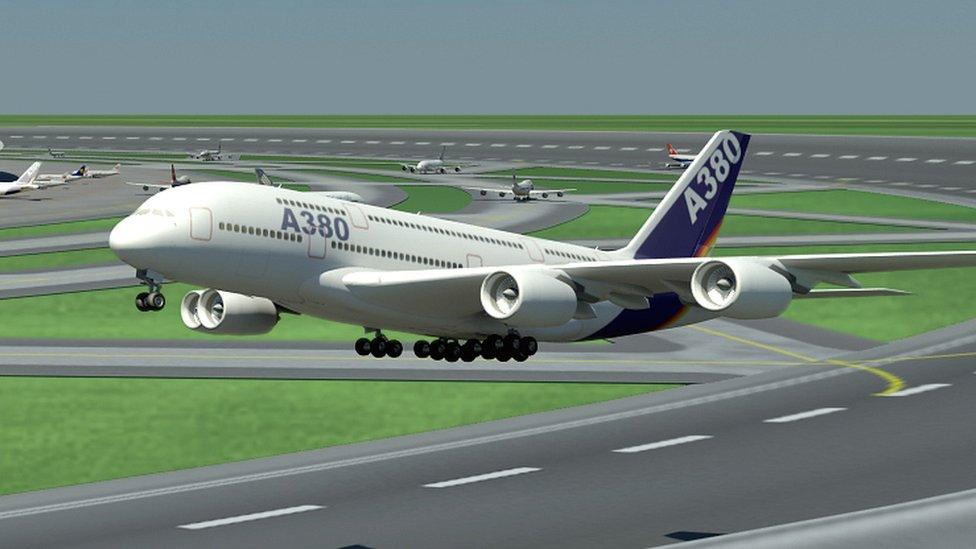
Would aborted landings known as 'go-arounds' present a threat to safety?
A new system for planning how aircraft move to and from the runway will be necessary.
We have designed a system where the air traffic controller is supported by a 'circular' planning tool. This seems strange at first, but is already applied in other fields. The planning will take all safety aspects into account, such as the possibility for a go-around by one or more aircraft simultaneously.

Stalling speeds
Robert Metcalfe on Twitter raised a point about stalling speeds while the aircraft is banking.
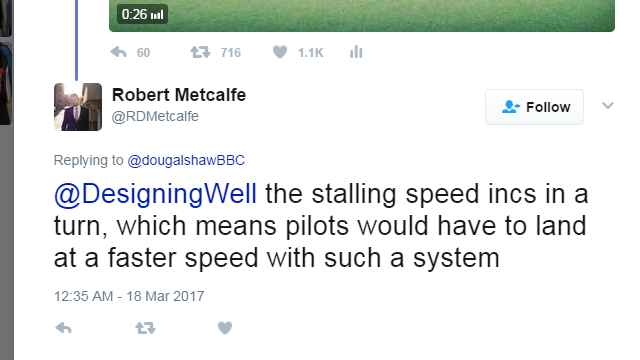

Henk replies: A higher speed will be necessary, indeed.
Take-off and landing run will increase because of this and the time that an aircraft spends on the runway will be about five to ten seconds longer.

Emergency landing
Peter Ellison asked by email what would happen in the event of an emergency if a plane slipped off the runway.
Henk: The width of the runway has been extended by another 20 meters for safety. We consider safety a major issue and made calculations on the necessary runway dimensions.
Anyway, the "edge" of the runway should not be designed as a large wall that airplanes can fall down from.
This additional safety distance is also necessary when the airplane lands at a point of the runway where it will be too low and the centrifugal forces will move it to the outside of the track and further outside than its optimal track.
We have calculated that the additional 20 meters will suffice for the safety case. We have also calculated that the aircraft will move to its optimal track in just one or two iterations, so no continuous bouncing upwards and downwards will occur. This is confirmed by the tests from the 1960s.
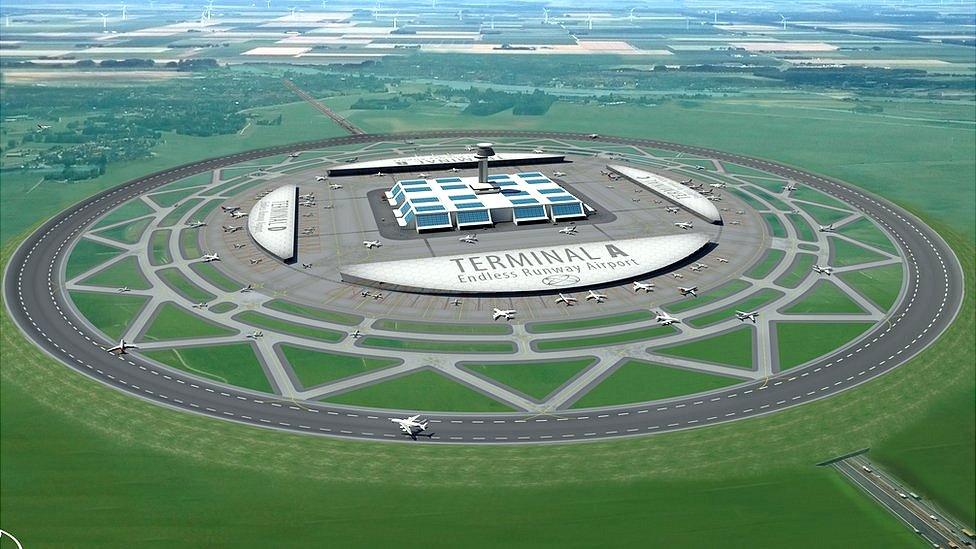
In good wind conditions three planes can land and take off simultaneously in Mr. Hesselink's design
Touchdown
Henk Hesselink conducts his work from the Netherlands Aerospace Centre and has received funding from the European Commission to research circular runways, leading a consortium of five European research institutes. In response to all the feedback to the video, he wanted to clarify the scope of the project, external.
"To start with, the idea is a concept and many questions I receive are very directly related to current day operations.
We must realize that it will take time before an endless runway can be brought into operation. It is like a concept car in a car exhibition - it will not be implemented exactly like this, but we learn a lot from the ideas, from simulations and, later on, practical tests.
If someone one hundred years ago would have said that we would be transporting as many passengers in aircraft as we would in trains, people may have thought , "a steam engine would never fit in an aircraft made of wood and ropes".
Follow Dougal Shaw on Twitter @dougalshawBBC, external
You can watch the original video here. See more videos from the World Hacks series on our website or follow the series on Facebook, external.